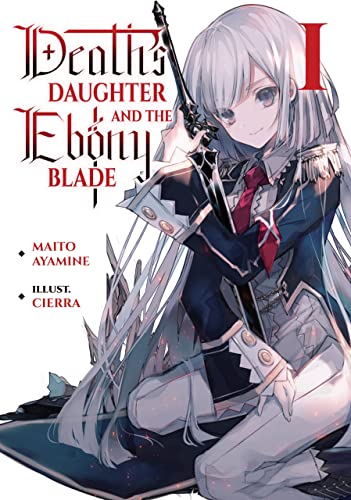By Maito Ayamine and Cierra. Released in Japan as “Shinigami ni Sodaterareta Shoujo wa Shikkoku no Tsurugi wo Mune ni Idaku” by Overlap Bunko. Released in North America by J-Novel Club. Translated by Sylvia Gallagher.
Always lovely when I have to eat my words. You may remember at the end of the last review I did, where I said that Ashton’s death likely wasn’t permanent, as this was not that kind of series. Well. Um. Guess it is now? I feel a bit guilty, given I recently dropped a series (The Mythical Hero’s Otherworld Chronicles) for getting too dark and cynical, but in this volume Death’s Daughter also doubles down on the dark. The good news is that it’s not nearly as cynical, and gives us some hope that the series will not end with everyone slaughtered (the flashforwards to how various dead commanders will be remembered helps). the bad news is that Ashton’s death does not seem to be the sort that can be undone by magical means, and also lots of other regulars die here as well. The very bad news is that the author couldn’t cram all the plot into this book, so the 2nd part of Vol. 7 is still to come.
The final battle between the Asvelt Empire and the Kingdom of Fernest ends up being completely upended by the arrival of ghouls controlled by the new emperor, who is not remotely evil at all, of course. This has always been a “war is bad” series, but the ghouls also help to remind you that even though war is bad, there are still ways that it should be fought, and these corpses do not do any of that. This is also bad news for the United City States of Sutherland, who get a “become my vassals or be destroyed” message from the empire, with one of the states serving as an example of what will happen. Even the Holy Land of Mekia can’t deal with this, and the Seraph finds that the ghouls are not a product of mage tactics. As for Fernest, well, let’s just say a lot of the cast who’ve been around since Book 1 gets one last battle. And, um… where’s Olivia, anyway?
The reason I spoil that Ashton is found dead in this volume is that it happens right at the start of this book. We then spend almost the ENTIRE book waiting for Claudia and Olivia to find out about it. We don’t even see Claudia till 4/5 of the way through the novel, and Olivia, after a brief scene showing her happily training with Z, is also absent for the bulk of it. There’s two reasons for this. First, I get the sense that if Olivia and Claudia were actually present throughout this volume, there’s no way that the series couldn’t avoid killing them off too, which would make the end a bit bleaker than I think even the author wants. The other reason is, of course, to show their devastated reactions at the book’s climax, because otherwise this would feel a bit too much like “the book was just cut in half arbitrarily”. The counterattack needs to start next time, even if the romantic resolution isn’t going to happen anymore.
So what’s next? There’s certainly a lot more cast we can kill off, but I suspect the last book will have a bit less of that. Till then, oof. This was a punch to the gut.






